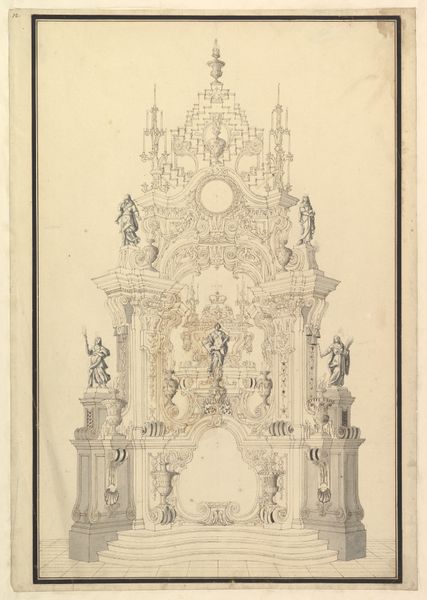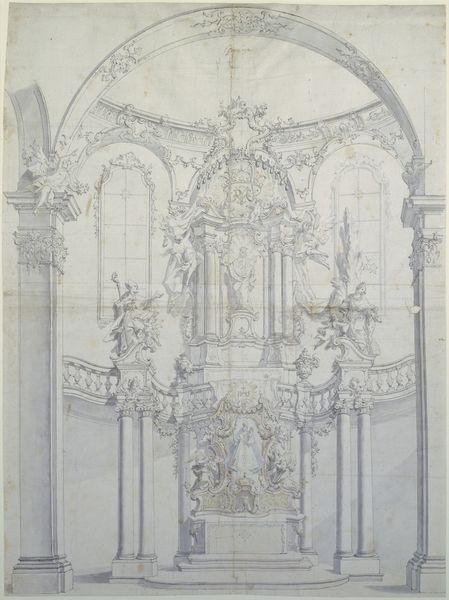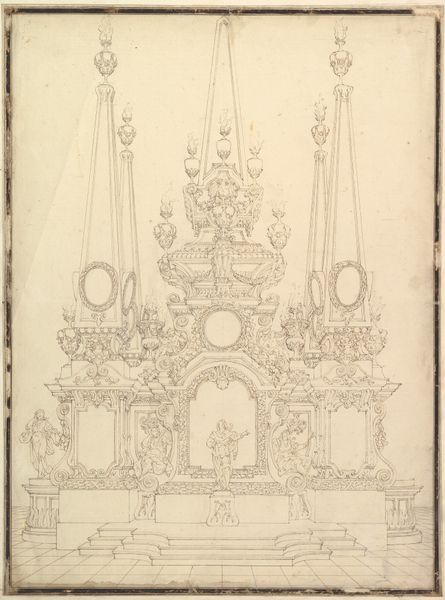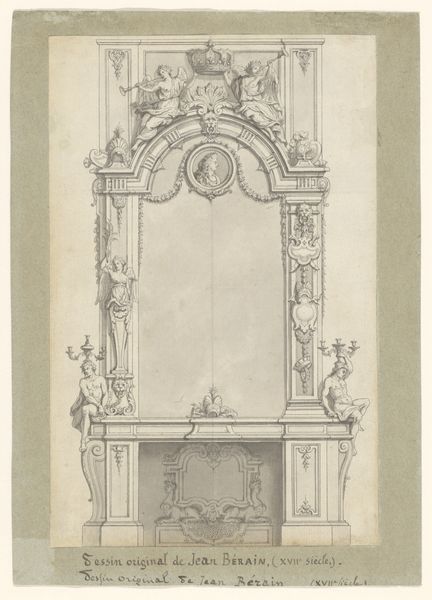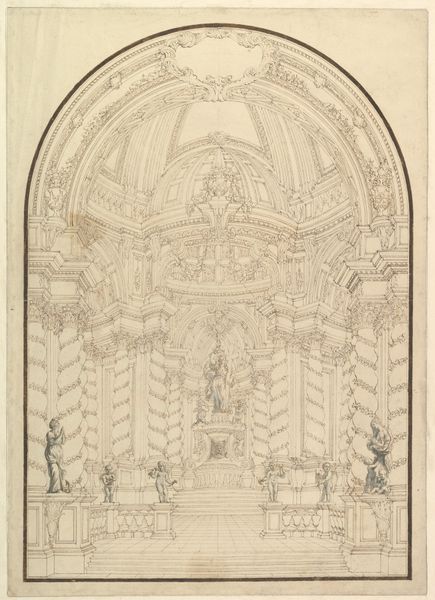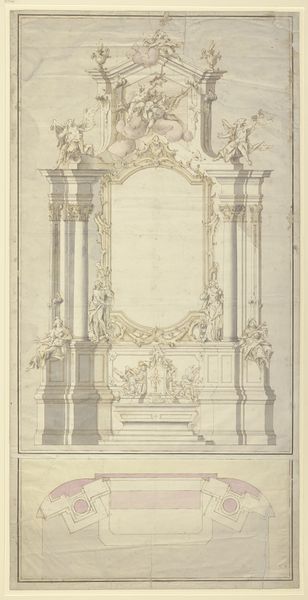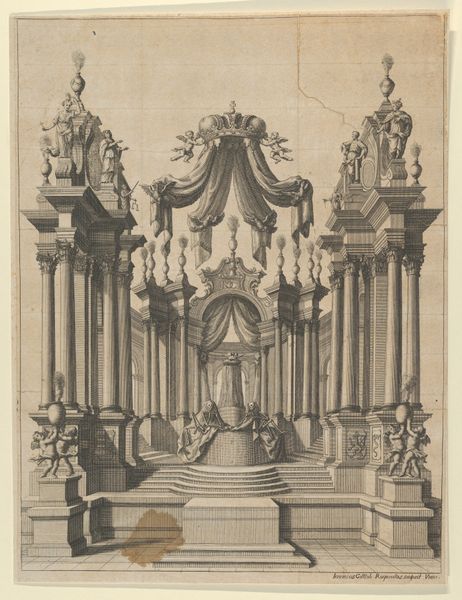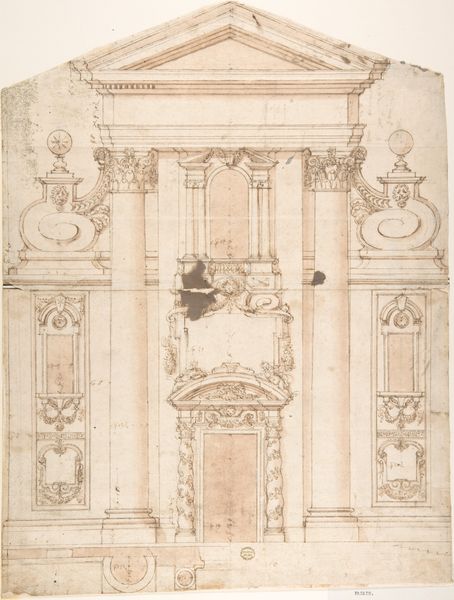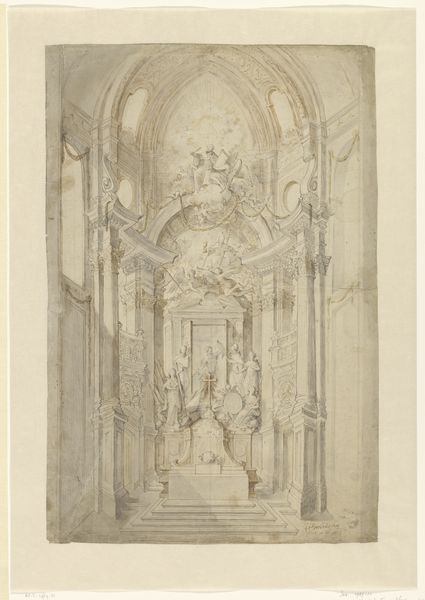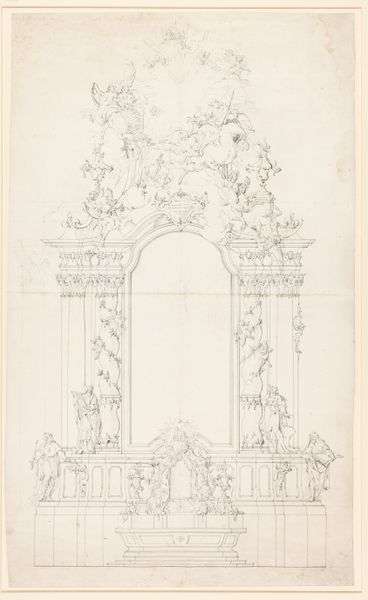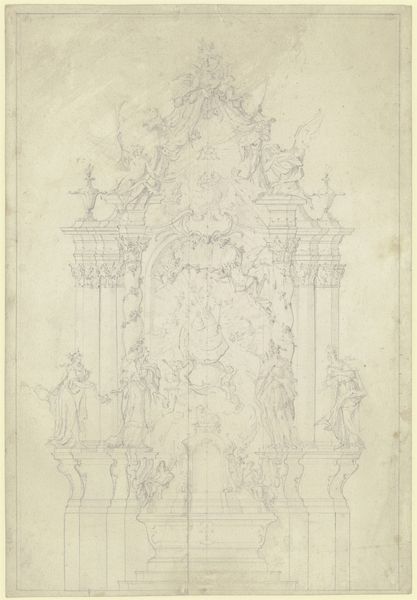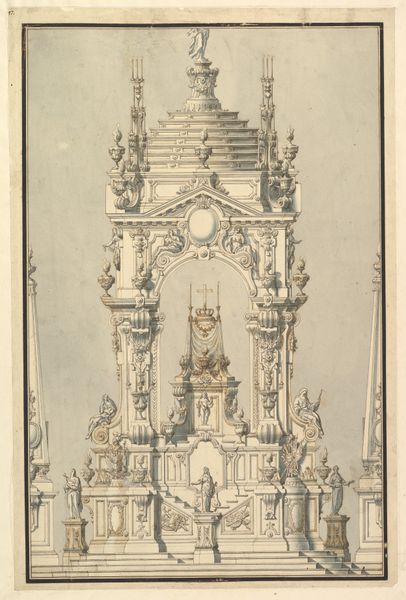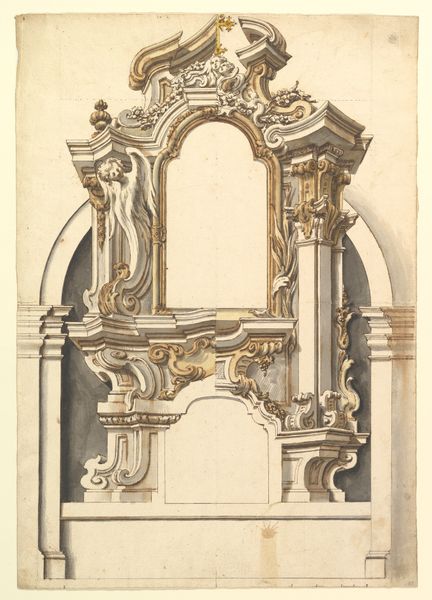
Design for the Transeptal Altars in the Klosterkirche Zwiefalten 1709 - 1772
0:00
0:00
drawing, print, pencil, silver-point, architecture
#
drawing
#
baroque
# print
#
perspective
#
form
#
pencil
#
line
#
silver-point
#
history-painting
#
architecture
Dimensions: sheet: 28 3/4 x 20 1/4 in. (73 x 51.4 cm)
Copyright: Public Domain
Editor: Here we have Johann Michael Feichtmayr's "Design for the Transeptal Altars in the Klosterkirche Zwiefalten," created between 1709 and 1772 using silverpoint, pencil, and print. It's quite ornate! I'm struck by the sheer grandeur, the almost overwhelming detail. What can you tell me about how this piece operates within its context? Curator: It's crucial to situate this drawing within the socio-political context of the Baroque period. This wasn’t just about aesthetics; it was about power. How does the visual language of Baroque, its extravagance and drama, reflect the power structures of the church and aristocracy at that time? Who was this artwork intended to impress and what message was it meant to convey? Editor: I see what you mean. The altars seem designed to inspire awe and obedience, right? To almost diminish the individual in the face of divine authority. Curator: Precisely. Consider, too, the role of religious institutions in perpetuating societal hierarchies. The altars, in their opulence, could be interpreted as a physical manifestation of the Church’s wealth and influence. Can we unpack the ethical implications of such displays, particularly when juxtaposed against the widespread poverty of the era? Editor: It's definitely a potent image, one that seems to justify its existence through pure aesthetic excess. A bit unsettling when you consider it in that light. Curator: Exactly. Reflect on the potential dissonance between spiritual humility and material grandeur. By dissecting these visual cues, we begin to appreciate how art becomes intertwined with prevailing ideologies, reinforcing power dynamics within society. Where does beauty end and oppression begin? Editor: It provides such an intense example of that link, though. Food for thought indeed! Curator: Absolutely, and that critical thinking allows us to challenge not just the art of the past, but the structures of power in our own world.
Comments
No comments
Be the first to comment and join the conversation on the ultimate creative platform.
